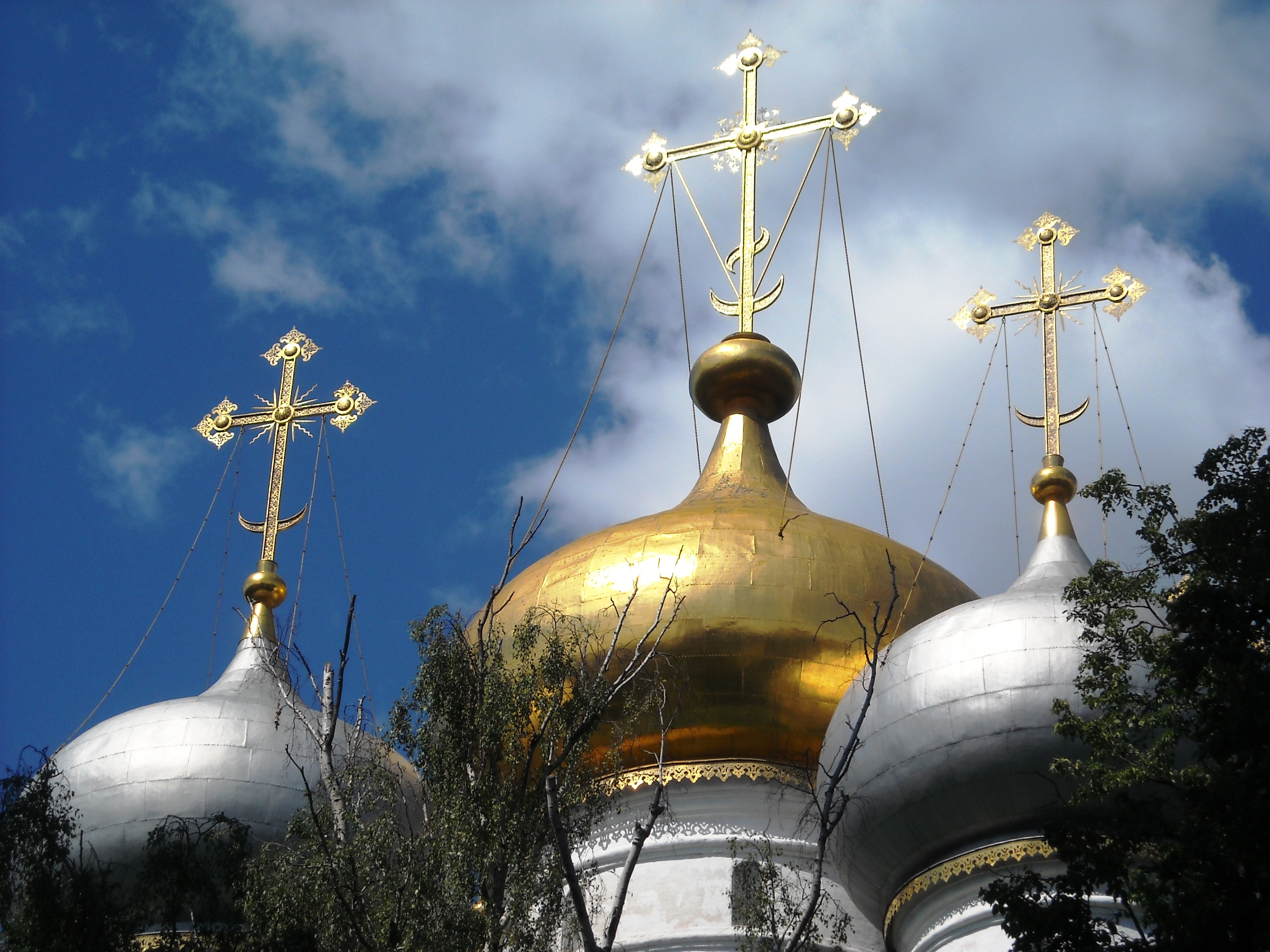Queer Places:
Novospassky Monastery, Krest'yanskaya Ploshchad', 10, Moskva, Russia, 115172
 Grand Duke Sergei Alexandrovich of Russia[1] (May 11, 1857 – February 17, 1905) was the fifth son and seventh child of Emperor Alexander II of Russia. He was an influential figure during the reigns of his brother Emperor Alexander III of Russia and his nephew Emperor Nicholas II, who was also his brother in law through Sergei's marriage to Elizabeth, the sister of Tsarina Alexandra.[2]
Grand Duke Sergei Alexandrovich of Russia[1] (May 11, 1857 – February 17, 1905) was the fifth son and seventh child of Emperor Alexander II of Russia. He was an influential figure during the reigns of his brother Emperor Alexander III of Russia and his nephew Emperor Nicholas II, who was also his brother in law through Sergei's marriage to Elizabeth, the sister of Tsarina Alexandra.[2]
Grand Duke Sergei's education gave him lifelong interests in culture and the arts. Like all male members of the Romanov dynasty, he followed a military career, and he fought in the Russo-Turkish War of 1877–78, receiving the Order of St George for courage and bravery in action. In 1882, his brother, Tsar Alexander III, appointed him Commander of the 1st Battalion Preobrazhensky Life Guard Regiment, a position he held until 1891. In 1889, Grand Duke Sergei was promoted to the rank of Major General. In 1884, Sergei married Princess Elisabeth of Hesse and by Rhine, a granddaughter of Queen Victoria. Their marriage remained childless, but they became the guardians of the two children of his brother, Grand Duke Paul Alexandrovich of Russia: Grand Duchess Maria, and Grand Duke Dimitri. Grand Duke Sergei Alexandrovich and his wife promoted the marriage of Sergei's nephew, Tsar NicholasnbspII, with Princess Alix of Hesse, Elizabeth's youngest sister.
Between 1891 and 1905, Grand Duke Sergei served as Governor General of Moscow. His reputation was tarnished as he was partially blamed for the Khodynka Tragedy, which, during the festivities following the coronation of Emperor NicholasnbspII, resulted in thousands of deaths. As a Governor of Moscow, Grand Duke Sergei was responsible for the expulsion of Moscow's 20,000 Jews at the start of his tenure, and he repressed a student movement to prevent the spread of revolutionary ideas. His conservative policies, extreme even by contemporary standards, made him a polarizing figure, and he was regarded as a reactionary. In 1894 Grand Duke Sergei was made a member of the State Council. In 1896 he was promoted to Lieutenant General and appointed as Commander of Moscow military district. After thirteen years of service, Grand Duke Sergei resigned from the Governorship on Januarynbsp1, 1905. Targeted by the SR Combat Organization, he was assassinated by a terrorist bomb at the Kremlin.
Sergei's marriage is barely documented. His private papers, including his correspondence with his wife, have not survived, and the evidence that does exist in the Moscow State archives, the most important repository of Romanov papers, is open to interpretation. According to some contemporary reports, Sergei was homosexual.[3] [4] His sexuality conflicted with his intense religious beliefs and the expectations of his position. Contrary to this belief, the marriage was happy, in its own way. Unusually for royal couples, they slept in the same bed for all of their married life.[5] Forced to defend Sergei against rumors of discord, Elizabeth Feodorovna was devoted to her husband and treasured his memory after his death.

Chudov monastery was demolished in 1928, and the Presidium of the Supreme Soviet was built on the site. The burial crypt of the Grand Duke was located in a courtyard of that building, which had been used as a parking lot. In 1990, building workers in the Kremlin discovered the blocked up entrance of the burial vault. The coffin was examined and found to contain the Grand Duke’s remains, covered with the military greatcoat of the Kiev regiment, decorations, and an icon. He had left written instructions that he was to be buried in the Preobrazhensky Lifeguard regiment uniform, but as his body was so badly mutilated this proved impossible. In 1995, the coffin was officially exhumed, and after a Panikhida in the Kremlin Cathedral of the Archangel, it was reburied in a vault of the Novospassky Monastery in Moscow on September 17, 1995.[6]
My published books:


BACK TO HOME PAGE

- ^ Grand Duke Sergei Alexandrovich of Russia, From Wikipedia, the free encyclopedia
- ^ Zeepvat, ''Romanov Autumn'', p. 121
- ^ Zeepvat, ''Romanov Autumn'', p. 132
- ^ Perry, Constantine, ''The Flight of the Romanovs'', p. 41
- ^ Warwick, ''Ella: Princess, Saint & Martyr'', p. 157
- ^ Zeepvat, ''Romanov Autumn'', p. 134

 Grand Duke Sergei Alexandrovich of Russia[1] (May 11, 1857 – February 17, 1905) was the fifth son and seventh child of Emperor Alexander II of Russia. He was an influential figure during the reigns of his brother Emperor Alexander III of Russia and his nephew Emperor Nicholas II, who was also his brother in law through Sergei's marriage to Elizabeth, the sister of Tsarina Alexandra.[2]
Grand Duke Sergei Alexandrovich of Russia[1] (May 11, 1857 – February 17, 1905) was the fifth son and seventh child of Emperor Alexander II of Russia. He was an influential figure during the reigns of his brother Emperor Alexander III of Russia and his nephew Emperor Nicholas II, who was also his brother in law through Sergei's marriage to Elizabeth, the sister of Tsarina Alexandra.[2]